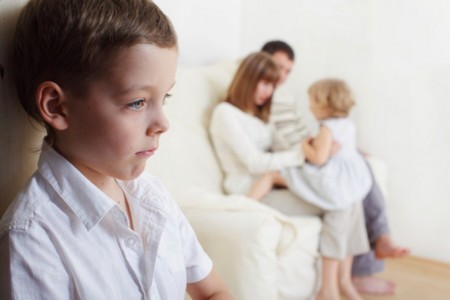Best Way to Help a Child Adjust to Moving to a New House
Psychological surveys have proved that moving to a new house is a very traumatic life event for adults, ranking third in terms of stress, after the death of a spouse and divorce. Moving is also a very stressful life event for young children.
By the age of two, a child is comfortable being in familiar surroundings and has organized his life around the predictability of his home environment. He knows where his toys are, what ornaments he mustn’t touch, and where the juice is kept. A break from this familiarity due to a move can be very unsettling. For a child aged four or five, a move can have a more complex emotional effect, because it may also involve a change of school, and probably a change of friends. No wonder that the child may be troubled by the prospect of moving.
Another reason why moving is stressful for a young child is that he doesn’t play an active role in it. Choosing a new house is something that adults do, not children. Decisions about area, type of house, size of back yard, placement of furniture, and who uses which room are made by adults. A child has to rely entirely on his parents’ judgement, and hope for the best. Not all moves are for positive reasons, such as to gain more space or live in a more desirable area; some moves are a result of divorce, bereavement, or unemployment.
When moving a child aged five or under, consider the following:
- Be positive about the move. No matter the real reasons for the move, talk to your child about it in a positive way. Explain to him that it will give you all a chance to enjoy a new home, with new surroundings and new friends. He’ll be happy about the move if he thinks you are happy about it.
- Don’t take your child house hunting with you. A young child soon becomes weary when trailed through one house after another while his parents discuss lots of boring details. This doesn’t make your task any easier.
- Once you’ve purchased your new house, take your child to see it. Emphasize the advantages to him: now he has his own room, the yard is bigger, a playground is nearby. Talk about how you’ll decorate and furnish his room. This will help your child see the move and the new house in a positive light.
- If the move causes a change of school, take your child to visit the new one before he starts. Naturally, your child will be apprehensive about meeting new children and teachers, so the sooner he meets them, the better. Do this before you move in.
- If at all possible, let your child keep in touch with old friends. His biggest fear may be that he will lose touch with his pals. If your move is local, reassure him that won’t happen, and let him make plans to play with his friends after the move takes place. If your move is farther afield, help your child send letters or take him for an occasional visit. This will generate a feeling of continuity.
Moving day and packing will be much more successful if your child is settled. Allow him to help pack some of his own clothes and toys. Let him keep out his favorite cuddly toy if he wants. As soon as the move is over, organize your child’s bedroom. A few of his toys and some familiar bedding will make the new place seem like home.
Categories
Advertisements
Recent Articles
 How to Understand Bed Sizes – A Small Guide
How to Understand Bed Sizes – A Small Guide How to Select Some Must Have Kitchen Accessories
How to Select Some Must Have Kitchen Accessories Best Way to Change a Car Tire
Best Way to Change a Car Tire Best Way to Write an Affirmation
Best Way to Write an Affirmation Best Way to Take Charge of Your Financial Life
Best Way to Take Charge of Your Financial Life Best Way to Survive a Party When You Don’t Know Anyone
Best Way to Survive a Party When You Don’t Know Anyone Best Way to Stop Self Sabotaging Yourself
Best Way to Stop Self Sabotaging Yourself Best Way to Start Journal Writing
Best Way to Start Journal Writing Best Way to Speak with a Powerful Voice
Best Way to Speak with a Powerful Voice Best Way to Simplify Your Life
Best Way to Simplify Your Life Best Way to Respond to a Put-Down
Best Way to Respond to a Put-Down Best Way to Reduce Acne Breakouts
Best Way to Reduce Acne Breakouts Best Way to Recover from Dining Disasters
Best Way to Recover from Dining Disasters Best Way to Quit Your Job Gracefully
Best Way to Quit Your Job Gracefully Best Way to Make Your Own Website
Best Way to Make Your Own Website



Leave a Reply